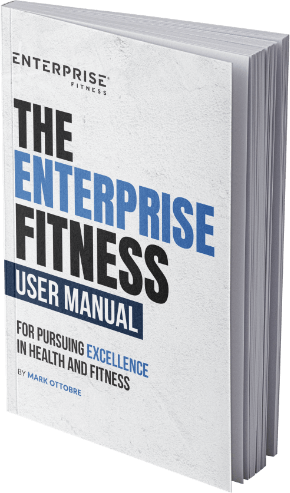In this video, Mark will demonstrate the method he uses in his screening assessment tool to evaluate shoulder health and present practical exercises to help alleviate some common issues. The video is aimed at providing both a theoretical understanding and actionable steps to improve shoulder stability and function.
Mark uses James as a case study to illustrate common shoulder problems and their solutions. James has a pronated posture, with his shoulders pushed forward and his chest muscles strong, but his upper back is weak. This imbalance puts James at a higher risk of shoulder injury, especially during movements that require acceleration without sufficient braking (stability). Mark notes that James’s lats are weak compared to his traps, negatively impacting his shoulder health.
Assessment Exercises
Mark begins with a series of assessment exercises to identify specific weaknesses in James’s shoulder stability and function:
-
- Overhead Squat: James struggles to maintain proper form during this exercise, indicating weaknesses in his upper back and thoracic extension. This suggests that his upper back muscles are not adequately supporting his shoulder movements.
- Active Hang: In this exercise, James is unable to maintain a straight arm position, revealing significant weakness in his lats. This weakness compromises his ability to stabilize his shoulder during various movements.
Corrective Exercises
To address the identified weaknesses, Mark recommends a set of corrective exercises designed to strengthen the relevant muscle groups and improve shoulder stability:
-
- One-Arm Kneeling Row: Mark instructs James to focus on depressing his scapula and pulling the weight towards his spine, rather than relying solely on arm strength. This exercise targets the lats and helps improve scapular control.
- Active Hang: Mark advises James to practice the active hang with a straight arm position, engaging his lats and maintaining a neutral spine. This exercise aims to enhance lat strength and overall shoulder stability.
Key Takeaways
- Scapular Articulation: The importance of scapular movement in maintaining proper shoulder health and function cannot be overstated. Proper scapular articulation ensures that the shoulder joint operates efficiently and reduces the risk of injury.
- Strengthening the Lats and Upper Back: Focusing on these muscle groups is crucial for improving shoulder stability. A stronger upper back and lats help in maintaining proper posture and shoulder alignment, which is essential for injury prevention.
- Effective Exercises: Exercises like the active hang and one-arm kneeling row are valuable for improving scapular articulation and shoulder function. Incorporating these exercises into a regular workout routine can significantly enhance shoulder health.
By following Mark’s assessment and corrective strategies, individuals can better understand their shoulder weaknesses and implement targeted exercises to address them, leading to improved shoulder stability and reduced risk of injury.
Visit our personal training studio on the web:
https://melbournepersonaltrainers.com/
Check out our courses and education programs:





